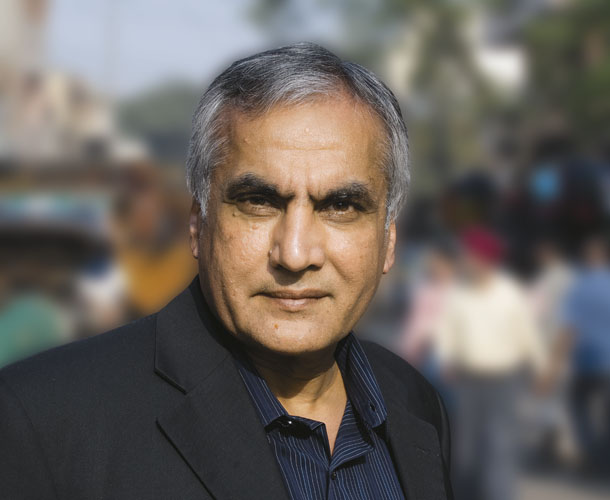
Ajay Relan: Catching 'em Early
When foreigners invest in India and benefit from its super-charged growth, are you going to sit back and watch, with your money put away in fixed deposits?
Ajay Relan, founder of CX Partners, a venture capital firm.
His call: The economic growth makes a compelling case for private equity investing by rich Indians.
His investment idea: PE investing involves long horizon and opaqueness in valuations. Choose funds that have safeguards built in.
Few aspirants to these coveted jobs know that many of the PE funds operating in emerging markets have not delivered stellar returns, and therefore the expectation that their jobs have a big carrot attached at the end of a five-year long stint may prove nothing more than a figment of their young, overheated imaginations.
Despite mediocre returns in the past, private equity funds aimed at the Indian market continue to attract billions of dollars in foreign money. One of my colleagues is fond of saying that the best investing minds in India (implying the professionals running PE funds) have been hired cheaply by Californian teachers to provide them with high returns on their pension funds. These Californian teachers, who are a metaphor for foreigners in general, are the smart ones: if India gets its act together, they will be the biggest beneficiaries of India’s super-charged growth engine. And the biggest losers will be Indians themselves who have sanguinely but less sagely put their eggs in the time deposit basket, eschewing the more adventurous strategies like PE funds. Perhaps he has a point. Perhaps it is time for the affluent in India to consider placing a slug of their savings in the PE basket.
At the macro level, certainly there is a strong case for allocating money to private equity: the Indian economy has proven one of the more resilient ones in the midst of economic mayhem in the developed world; our banking system has withstood the shocks without threat of collapse or any alarming increase in non-performing assets (which also proves the robustness of our financial regulatory framework); certain sectors of the Indian economy are galloping at a double digit clip; within these sectors, there are several companies that are growing at mind-boggling rates of over 50 percent a year. Such a favorable environment must surely make for a compelling case for private equity investing by rich Indians. And it does, except that the devil, as usual, is in the details.
The first stand-out question is: How is PE different from the more popular modes of investing in equity like mutual funds? A classical PE investment would entail identifying an unlisted company with strong cash flows and a great management team, conducting a detailed diligence and arriving at a business model that reflects the company’s realistic performance on various financial performance in the next few years, negotiating a meaningful role in guiding the company towards achievement of these goals, negotiating an entry valuation that is fair but provides reasonable assurance that the fund’s investment return targets will be met even if there is some business turbulence along the way, and finally ensuring there are well-defined ways out of the investment.
Sadly, only a few PE firms in India have stayed faithful to this classic model. Many have fallen prey to the temptation of investing like a mutual or a hedge fund. Very often entry valuations have been far too expensive driven by price auctions as PE funds have competed with each other to secure the better managed companies: the constant refrain of the Indian PE industry has been that there is too much money chasing too few deals thereby justifying entry price inflation. Some of the PE funds simply do not have either the experience or the operational expertise to help the company, which then cannot be faulted for seeking the public sources of equity.
High net-worth individuals need to examine the track record of PE funds to assess how successful they have been in driving good bargains and have not acted as mutual funds in the guise of a PE Fund.
Investors should therefore be asking questions about the fund size and how the fees will be spent: they should clearly avoid those PE funds where the owner-managers are robber-bandits being paid bags of money simply for the fee component. Also, it is important that the fund be one where the owner-managers have committed a substantial proportion of their net worth to the fund, hence putting their money where their mouth is.
Even if one is satisfied on all the counts outlined, PE investing is unique on two other fronts: the time horizon for exit may extend to as much as ten years, and during this period, you have only an approximate idea of how the fund is performing because much of the portfolio may not be listed and therefore transparent valuations based on market prices may not be available. Both these factors — a long time horizon and opaqueness in valuations — necessitate that a PE fund worthy of consideration has incorporated certain safeguards. Investors should examine whether the fund provides with the opportunity to revoke their commitments if key members of the investment team leave to pursue other interests (what is known in industry parlance as the “the key-man” clause), as also they should consider the reporting and valuation methodologies of the fund.
 Illustration: Abhijeet Kini
Illustration: Abhijeet KiniMany investors may not find themselves up to this challenge for lack of expertise or time. Then, at the very least, they should look at the composition of the fund’s advisory board, which comprising key investors, can often implement good governance practices and adjudicate on conflicts of interest that may arise between the interest of the investors and the tund managers. Finally, a note of caution on tax treatment of capital gains: most local PE investing is structured through determinate trusts, and capital gains will not be taxed at the trust level, but I wish this was as unambiguous as we would like it to be.
If you are still glued to this article, then perhaps you have the gumption to go ahead and invest in private equity. Worldwide, pension funds, endowments and trusts are doing so in the hope of greater rewards and allocating as much as 10 percent of their portfolios to private equity. Perhaps it’s time the rich Indian shed his or her conservatism and took the plunge.
(This story appears in the 22 January, 2010 issue of Forbes India. To visit our Archives, click here.)
Post Your Comment















